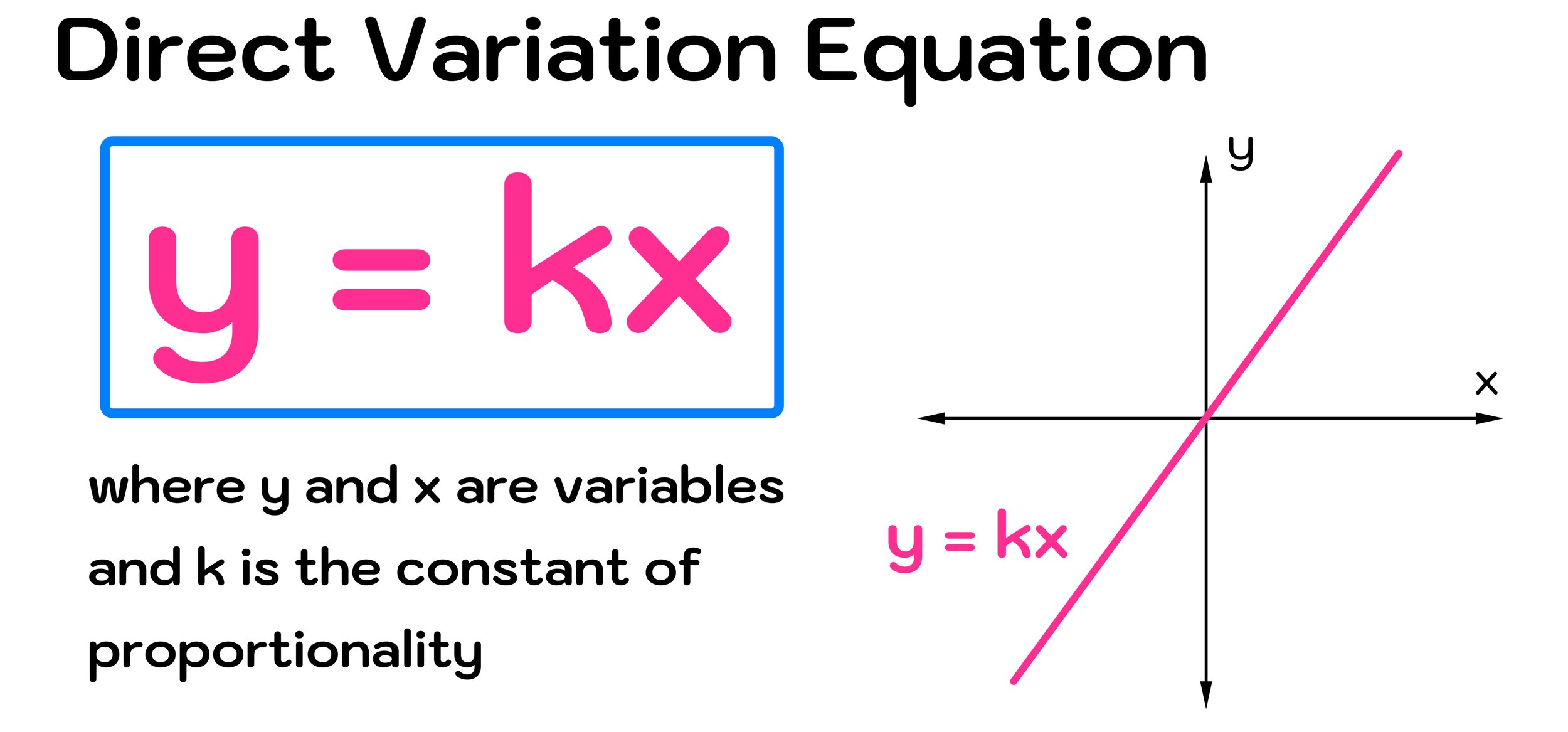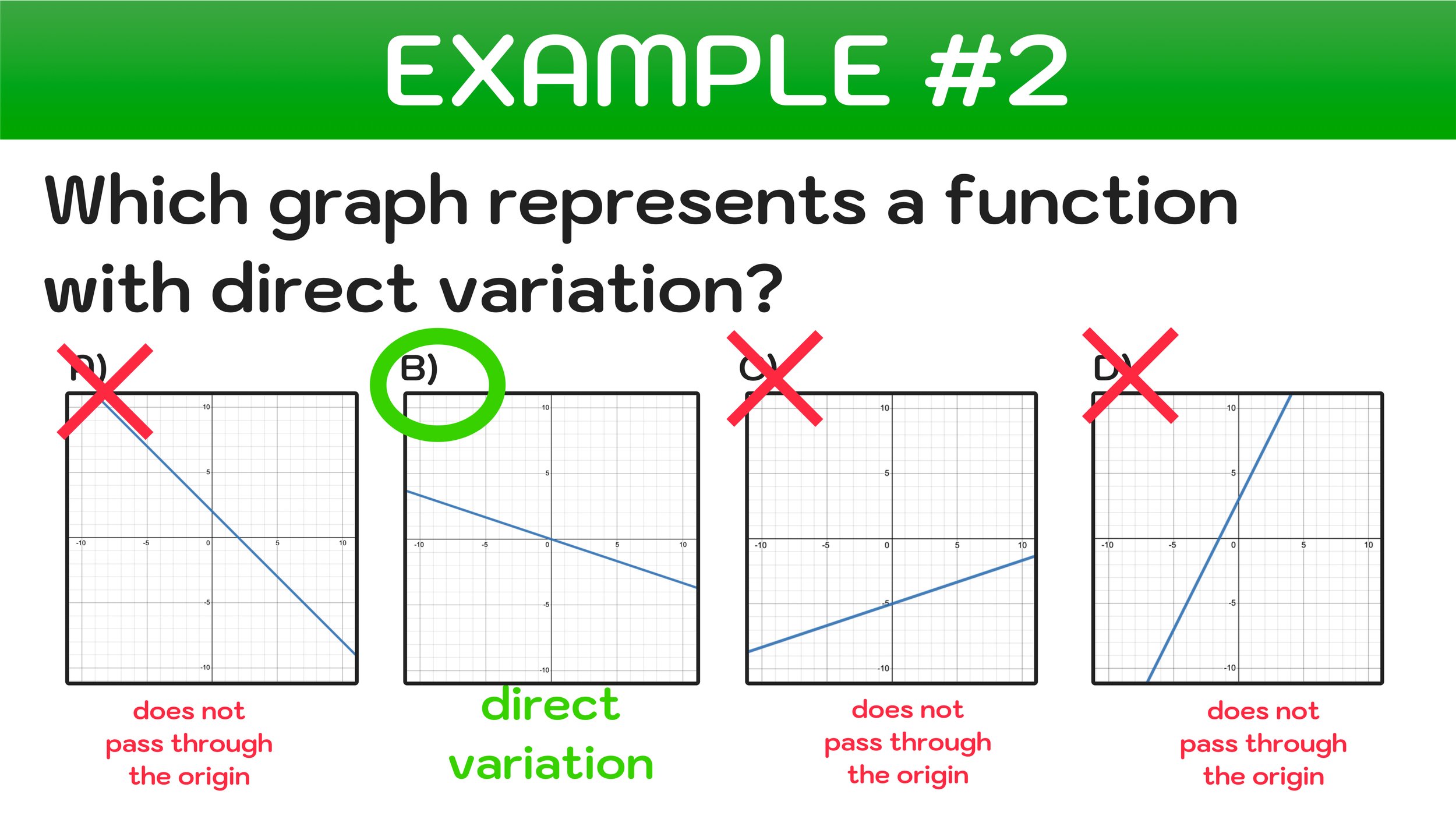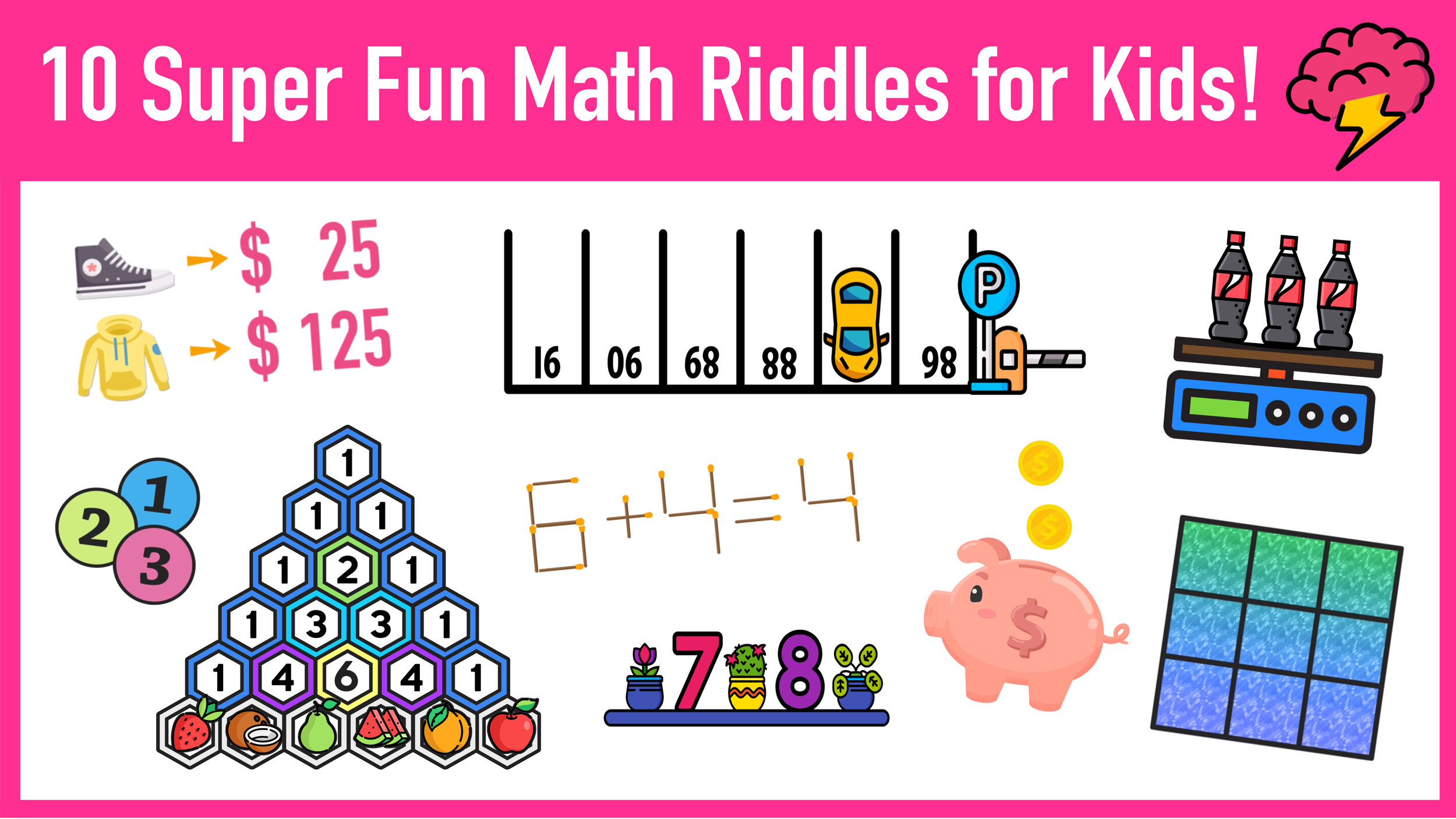What is Direct Variation?
Your complete guide to direct variation and the direct variation equation
Whenever you are learning about linear functions and linear relationships in algebra, you will eventually come across a concept called Direct Variation, which refers to a proportional linear relationship between two variables, x and y. This short guide will teach you everything you need to know about direct variation and covers the following topics:
Now, let’s start off by learning some key definitions and characteristics about the concept of direct variation.
What is Direct Variation?
Direct Variation Definition:
What is a direct variation? In math, direct variation is a proportional linear relationship between two variables that can be expressed as the equation y = kx, where y and x are variables and k is a constant.
Figure 01: What is a Direct Variation? Direct Variation Definition
According to the direct variation definition, direct variation means that as x increases, y also increases proportionally. Similarly, as x decreases, y also decreases proportionally. In other words, if two quantities are related to each other in such a way that when one quantity increases, the other quantity increases by a proportionally, then you can say that the quantities vary directly with each other.
What are direct variations in real life? An example would be a train that is moving at a constant speed, the distance it covers over a given time period is directly proportional to its speed. If the train doubles its speed, it will cover the twice the distance in that same amount of time. In this example, the direct variation formula would be y = kx where y equals distance travelled, k equals the speed, and x equals time.
The Direct Variation Equation
The direct variation equation is of the form y = kx, where x and y are variables and k is the constant of proportionality.
The direct variation equation states that y varies directly with x, which essentially means that as x increases or decreases, y also increases or decreases proportionally.
Figure 02: The Direct Variation Equation y = kx
For example, if y represents the total cost of buying x items that cost $7 each, then the direct variation equation would be
y = 7x
In this direct variation equation, 7 is the constant of proportionality, which represents the cost per item. And, for example:
When x=2, y=14
When x=3, y=21
When x=10, y=70
Now that you are familiar with the direct variation definition and direct variation equation, let’s look at a few direct variation examples!
Direct Variation Examples: What is a Direct Variation?
In this next section, we will look at a few direct variation examples (equations and corresponding graphs). Before we look at the direct variation examples, it is important to note that any direct variation equation of the form y = kx must be a linear function that passes through the origin (the point (0,0) ) because the constant of proportionality, k, represents the ratio of y and x when they both are equal to zero.
In other words, whenever x=0, it must also be true that y=0, so the graph of any function with direct variation must pass through the origin.
Figure 03: Any function with direct variation will pass through the point (0,0)
Direct Variation Example #1
Let’s start by looking at a simple example of a linear function that has direct variation.
Consider the function y = 6x.
Notice that this function matches the direct variation equation y = kx where
y represents the output value
x represents the input value, and
k=6, the constant of proportionality
So, for example:
When x = 2, y = 12, because 12 = 6(2) → (2,12) is a point on the line
When x = -1, y = -6, because -6 = 6(-1) → (-1,-6) is a point on the line
When x = 0, y = 0, because 0 = 6(0) → (0,0) is a point on the line
By looking at the graph in Figure 04 below, it should be easy to see why the function y=6x has direct variation because the equation is of the form y=kx and the graph passes through the origin.
Figure 04: The function y=6x has direct variation because it increases proportionally, is linear, and passes through the origin.
Conversely, consider the function y = 6x + 3
Notice that this function does not matches the direct variation equation y = kx because of the additional +3 term
Since this function is not of the form y = kx, it does not have direct variation.
By looking at the graph in Figure 05 below, you can see that the function y=6x+3 does not pass through the origin and, therefore, does not have direct variation even though it is a linear function.
Figure 05: The function y=6x+3 does not have direct variation because it is not of the form y=kx and it does not pass through the origin.
Figure 06 below compares the functions y=6x and y=6x+3 to help you understand why y=6x has direct variation and why y=6x+3 does not have direct variation.
Figure 06: Direct Variation Examples: The function y=6x has direct variation, but the function y=6x+3 does not have direct variation.
Direct Variation Example #2
Consider a situation where a construction worker is paid $44 hourly. The amount of money earned by the construction worker varies directly with the number of hours that they work.
So, the equation that could represent this scenario would be y = 44x, where
y represents the output value (total amount of money earned)
x represents the input value (total amount of hours worked)
k=44, the worker’s hourly pay rate, which is a constant
So, for example:
When x = 2, y = 88, because 88 = 44(2) → when they work 2 hours, they earn $88
When x = 10, y = 440, because 440 = 44(10) → when they work 10 hours, they earn $440
When x = 0, y = 0, because 0 = 44(0) → when they work 0 hours, they earn $0
By looking at the graph and table in Figure 07 below, you can see that the function y=44x has direct variation because it is linear, of the form y=kx, and it pass through the point (0,0).
Figure 07: The function y=44x has direct variation because it increases proportionally, is linear, and passes through the the point (0,0).
Direct Variation Example #3
Finally, let’s looks at an example of a function with direct variation where the constant, k, is negative.
For example, the temperature of a gas varies directly with its volume. As the volume of the gas increases, the temperature of the gas decreases at a rate of -7.5. You can express this relationship using the direct variation equation: y = -kx, where:
y represents the temperature of the gas
x represents the volume of the gas
k=-7.5, the rate at which the volume of the gas decreases as the temperature increases
It is important to note that k being negative does not change the fact that this equation has direct variation, because the variables still change proportionally to each other.
Figure 08 below illustrates the table and graph of this direct variation function where k is negative.
Figure 07: The function y=-7.5x has direct variation even though k is negative. As the volume (x) grows larger, the temperature of the gas (y) proportionally decreases.
Which Graph Represents a Function with Direct Variation?
In this final section, we will take a look at two sample math test questions where you have to determine which graph represents a function with direct variation.
These types of questions are typically in multiple choice form where you are given the graph of four functions and you have to determine which one of the four represents a function with direct variation.
To successfully answer these types of questions, it is important to remember the following key characteristics of functions with direct variation:
Any function with direct variation is of the form y=kx and must be linear
Any function with direct variation will pass through the origin (the point (0,0)
With these key characteristics in mind, let’s move onto the examples of identifying a direct variation graph.
Example #1: Which Graph Represents a Function with Direct Variation?
Which graph represents a function with direct variation?
Looking at the four graphs and knowing the key characteristics of direct variation functions, you can use process of elimination to find the correct answers.
For starters, notice that the graphs in Choice A and B are not linear, so you can eliminate them right away since direct variation functions are of the form y=kx and are always linear.
Which graph represents a function with direct variation? You can always start by eliminating any functions that are not linear.
Now you have narrowed down the correct answer to either Choice C or D, both of which are linear.
However, we know that, in addition to being linear, a direct variation graph must pass through the origin point (0,0).
By looking at the graphs of Choice C and D, you can see that C does not pass through the origin, but D does, so you can conclude that the graph of Choice C does not have direct variation and that the final answer is D.
Final Answer: Choice D represents a function with direct variation.
Which graph represents a function with direct variation? Choice D represents a function with direct variation
Example #2: Which Graph Represents a Function with Direct Variation?
Now let’s work through one more similar example of identifying the graph of a direct variation
Which graph represents a function with direct variation? Notice that all of the functions are linear.
Just like the last example, you want to use process of elimination to determine the correct answer.
However, unlike the last example, notice that all of the graphs are linear functions, so you can’t eliminate any non-linear choices. But, you know that a direct variation formula must not only be linear, but it must also pass through the origin.
By looking at the four graphs, you can see that the only function that passes through the origin is Choice B, so you can conclude that it is the only function with direct variation.
Final Answer: Choice B represents a function with direct variation.
Which graph represents a function with direct variation? Choice B represents a function with direct variation
More Math Resources You Will Love:
Search Tags: direct variation, direct variation equation, what is direct variation, direct variation definition, what are direct variations, what is a direct variation, which graph represents a function with direct variation, direct variation examples, direct variation formula, direct variation graph, examples of a direct variation
























